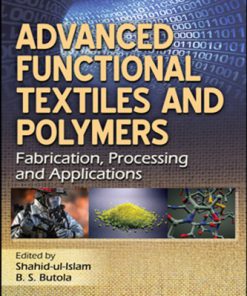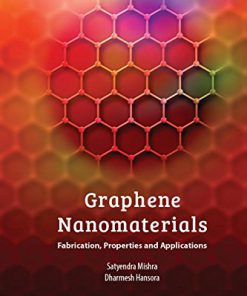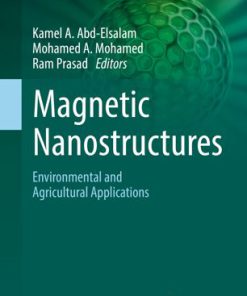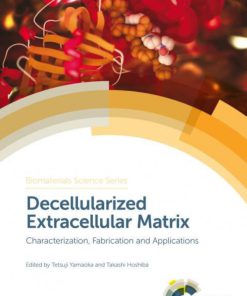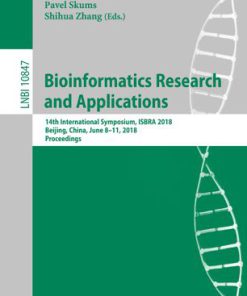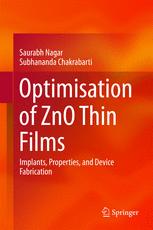ZnO nanostructures fabrication and applications 1st edition by Yue Zhang 1788010238 9781788010238
$50.00 Original price was: $50.00.$25.00Current price is: $25.00.
ZnO nanostructures fabrication and applications 1st edition by Yue Zhang – Ebook PDF Instant Download/DeliveryISBN: 1788010238, 9781788010238
Full download ZnO nanostructures fabrication and applications 1st edition after payment.

Product details:
ISBN-10 : 1788010238
ISBN-13 : 9781788010238
Author: Yue Zhang
As wide band semiconductors with rich morphologies and interesting electric, optical, mechanical and piezoelectric properties, ZnO nanostructures have great potential in applications, such as strain sensors, UV detectors, blue LED, nano generators, and biosensors.
ZnO Nanostructures: Fabrication and Applications covers the controllable synthesis and property optimization of ZnO nanostructures through to the preparation and performance of nanodevices for various applications. The book also includes recent progress in property modulation of ZnO nanomaterials and new types of devices as well as the latest research on self-powered devices and performance modulation of ZnO nanodevices by multi-field coupled effects.
Authored by a leading researcher working within the field, this volume is applicable for those working in nanostructure fabrication and device application in industry and academia and is appropriate from advanced undergraduate level upwards.
ZnO nanostructures fabrication and applications 1st Table of contents:
Chapter 1 Overview
1.1 Introduction of Nanomaterials
1.2 Introduction of ZnO Nanomaterials
References
Chapter 2 Designing and Controllable Fabrication
2.1 Vapour Phase Deposition Methods
2.1.1 Chemical Vapour Deposition by Thermal Evaporation
2.1.2 Thermal Evaporation Chemical Vapour Deposition with Carbothermal Reduction
2.1.3 Metal-organic Chemical Vapour Deposition
2.1.4 Thermal Evaporation Physical Vapour Deposition
2.1.5 Pulsed Laser Deposition
2.1.6 Molecular Beam Epitaxy
2.1.7 Magnetron Sputtering
2.2 Liquid-phase Reaction Methods
2.2.1 Liquid-phase Direct Reaction Method
2.2.2 Electrochemical Deposition
2.2.3 Template Method
2.2.4 Sol-gel Method
2.3 Patterned Growth of ZnO Nanostructures
References
Chapter 3 Property Characterisation and Optimisation
3.1 Electronic Properties
3.1.1 Electronic Structure
3.1.2 Electronic Structure Modulation
3.1.3 Influence of Defects
3.2 Electrical Properties
3.2.1 Electrical Transport Properties
3.2.2 Ohmic and Schottky Contacts
3.3 Magnetic Properties
3.4 Mechanical Properties
3.4.1 Elastic Properties
3.4.2 High-pressure Induced Phase Transition
3.5 Optical Properties
3.5.1 Photoluminescence
3.5.2 Stimulated Emission and Waveguide Properties
3.5.3 Non-linear Optical Properties
3.6 Piezoelectric and Dielectric Properties
3.6.1 Origin of Piezoelectricity in ZnO
3.6.2 Piezoresponse Force Microscopy
3.6.3 Piezoelectric Property Enhancement
3.6.4 Dielectric Properties
3.7 Photocatalytic Properties of ZnO Nanostructures
References
Chapter 4 Electromechanical Devices
4.1 Individual Nanostructure-based Electromechanical Devices
4.1.1 Individual Nanowire-based Mess Sensor
4.1.2 Individual Nanostructure-based Strain Sensor
4.1.3 Individual Doped Nanostructure-based Strain Sensors
4.2 Nanowire Array-based Electromechanical Devices
4.2.1 Nanowire Network-based Strain Sensors
4.2.2 Nanowire Array-based Vibration Sensors
4.2.3 Nanowire Array-based Pressure Sensor
4.3 Hybrid Structure-based Electromechanical Devices
4.3.1 Carbon Fibre/ZnO Nanowire Array-based Flexible Strain Sensors
4.3.2 PU Fibre/ZnO Nanowire Array-based Multifunctional Strain Sensor
References
Chapter 5 Photoelectrical Devices
5.1 Light-emitting Diodes
5.1.1 Homojunction LED
5.1.2 p-n Heterojunction LED
5.1.3 MIS Heterojunction LED
5.2 UV Detectors
5.2.1 UV Detectors Based on a Single ZnO Nanowire
5.2.2 UV Detectors Based on ZnO Nanowire Arrays
5.2.3 UV Detectors Based on a Graphene/ZnO Hybrid
5.3 Solar Cells
5.3.1 Dye Sensitised Solar Cells
5.3.2 Perovskite Solar Cells
References
Chapter 6 Photoelectrochemical Devices
6.1 Introduction
6.2 PEC Principles
6.3 PEC Performance Optimisation
6.3.1 Light Absorption
6.3.2 Charge Separation Efficiency
6.3.3 Photo-stability
References
Chapter 7 Biosensing Devices
7.1 Electrochemical Biosensors
7.2 FET-based Biosensors
7.3 HEMT-based Biosensors
References
Chapter 8 Self-powered Devices
8.1 ZnO Nanostructure-based Self-powered Photodetectors
8.1.1 Schottky Junction SP Photodetectors
8.1.2 p-n Junction Self-powered Photodetectors
8.1.3 Solid–Liquid Junction Self-powered Photodetector
8.1.4 Piezotronic Engineering for Self-powered Photodetector Optimisation
8.2 PEC Biosensing
References
Chapter 9 Service Behaviours
9.1 Introduction
9.2 Electrical Nanodamage and Nanofailure
9.3 Mechanical Nanodamage and Nanofailure
9.4 Electromechanical Nanodamage and Nanofailure
9.5 Chemical-Mechanical Hybrid Nanodamage and Nanofailure
References
Chapter 10 Field Emission and Electromagnetic Wave Absorption
10.1 Field Emission Properties and Applications
10.1.1 Field Emission Properties of Large Area Nanowires
10.1.2 Field Emission Properties of Single NWs
10.1.3 High Intensity Field Emission
10.1.4 Influencing Factors of Field Emission Properties
10.2 Electromagnetic Wave Absorption Properties and Applications
10.2.1 Absorption Properties of T-ZnO/Epoxy Resin Coatings
10.2.2 Absorption Properties of T-ZnO/Carbon Nanostructure Coatings
10.2.3 Absorption Properties of 3D ZnO Network Structures
People also search for ZnO nanostructures fabrication and applications 1st:
zno nanostructure
zno nanobelts
zno nanostructures
zno nanostructures growth properties and applications
fabrication of zno nanorods and nanotubes in aqueous solutions
Tags: ZnO nanostructures, fabrication, applications, Yue Zhang
You may also like…
Engineering
Technique - Nanotechnology
Biology and other natural sciences - Biotechnology
Biology and other natural sciences
Nanostructures for Antimicrobial and Antibiofilm Applications Ram Prasad
Engineering
Optimisation of ZnO Thin Films Implants Properties and Device Fabrication 1st Edition Saurabh Nagar




